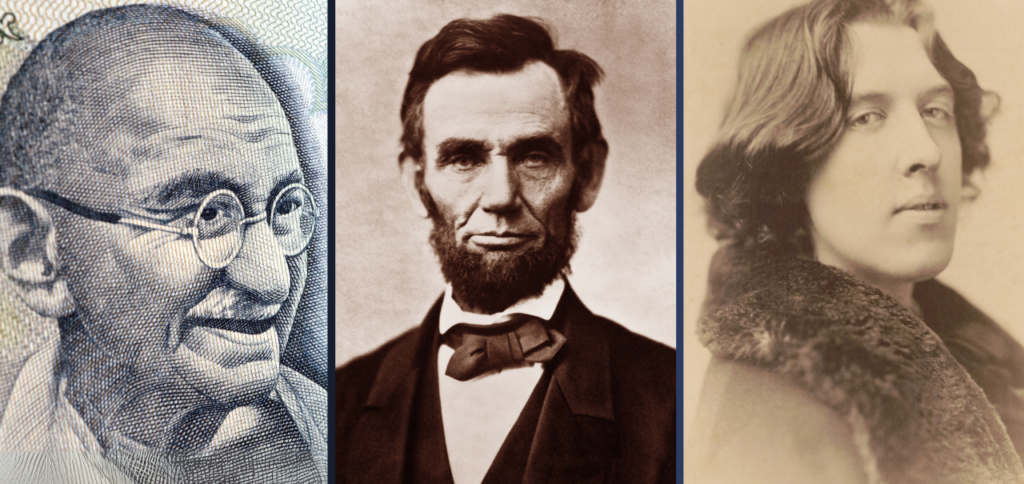In the fast-paced environment of business meetings, it’s not uncommon to encounter individuals who, intentionally or not, disrupt the flow with sharp, seemingly offhand comments. These individuals, whom I refer to as ‘snipers,’ take pot-shots at others, often without much substance behind their remarks. The challenge is not so much the validity of their comments but rather how unprepared one might be for such disruptions. In these situations, the key is to remain composed, address the content of their comment, and steer the conversation back on track. The method I use to do this is a simple yet powerful framework codified in Neuro-Linguistic Programming (NLP) but its history is a rich and timeless one.
The Anatomy of a ‘Sniper’
Before delving into the framework, it’s important to understand the typical behaviour of a ‘sniper’ in meetings. These individuals often act from a place of insecurity, a desire to assert dominance, or simply a habit of playing devil’s advocate. Their comments are usually abrupt and unexpected, designed to catch others off guard. Historical examples of such behaviour can be seen in the rhetorical duels of ancient Rome, where politicians like Cicero often faced opponents who would make sharp, unprovoked attacks. Cicero’s ability to stay calm and respond with reasoned arguments is a testament to the effectiveness of managing such interactions.
The NLP Framework: State, Structure & Content
The first pillar of the framework is managing one’s state, structuring the response, and focusing on the content of the sniper’s remark. In any situation, maintaining a calm and controlled state is crucial. This concept is well illustrated by the negotiation tactics used by Winston Churchill during World War II. Churchill, known for his composure under pressure, often dealt with critical remarks and opposing views with a steady demeanour, ensuring that his responses were measured and well-structured.
In my recent experience on a Zoom call, I faced a sniper who criticized my approach to engaging with a client organisation about a fee structure change. By maintaining a calm state, I was able to acknowledge their alternative suggestion without letting the critique rattle me. I then structured my response to emphasise that the process I followed was aligned with agreed principles and precedents, subtly invalidating the sniper’s position without attacking them personally.
The Power of Non-Verbal Cues: Voice Tone and Polyvagal Theory
As crucial as the content of your response is, how you deliver it—particularly your non-verbal cues, such as voice tone—can significantly impact the outcome of the interaction. According to Polyvagal Theory, developed by Dr. Stephen Porges, our nervous system reacts to social cues, especially non-verbal ones, in ways that can either promote safety and connection or trigger a defensive response. When nullifying someone’s argument, especially in the context of handling snipers, it is vital to control your non-verbal signals to prevent the other person from being shunted into a mobilised (fight/flight) or immobilised (freeze) state.
For instance, when I responded to the sniper during the Zoom call, I consciously kept my voice tone soft and steady. A harsh or overly assertive tone could have been perceived as a threat, potentially triggering a defensive reaction that would escalate the confrontation. By maintaining a calm and measured tone, I signaled safety and respect, which helped to keep the conversation constructive.
Historical figures have often used this technique to great effect. Mahatma Gandhi, for example, was known for his calm and steady voice tone, even in the face of aggression or hostility. This non-verbal control not only conveyed his inner calm but also disarmed his opponents, making it difficult for them to respond with aggression. Similarly, in his famous debates, Abraham Lincoln’s steady and composed delivery helped him maintain control over the discourse, ensuring that his opponents remained engaged rather than defensive.

The Power of Chunking
Chunking, a concept borrowed from computer science, involves breaking down information into manageable pieces or grouping smaller pieces into broader concepts. In the context of rhetoric, negotiation, and debate, chunking can be a powerful tool. For example, Abraham Lincoln’s Gettysburg Address is a masterclass in chunking. Lincoln took the complex and emotionally charged issue of civil war and distilled it into a speech that addressed the larger ideals of liberty and equality (big chunks) while also honoring the specific sacrifice of those who fought (small chunks).
Another historical example of effective chunking comes from the witty and incisive one-liners of Oscar Wilde. Consider Wilde’s famous epigram: “I can resist everything except temptation.” This line brilliantly condenses a complex commentary on human nature into a single, memorable phrase (a small chunk), while simultaneously evoking larger themes of morality, desire, and self-control (big chunks).
In the Zoom meeting scenario, I used chunking to navigate the sniper’s comment. I first acknowledged the alternative process they suggested (a small chunk) but then expanded the conversation to discuss the broader principles and precedents (big chunks) that guided my decision. This shift in focus allowed me to address the sniper’s comment while reinforcing the validity of my approach.
Navigating the Timeline: Past, Present, Future
Another key aspect of the framework is considering the timeline—past, present, and future—when responding to a sniper. Historical precedents can be particularly powerful in this regard. Consider the debates between Thomas Jefferson and Alexander Hamilton regarding the direction of the young American republic. Jefferson often referenced historical precedents from ancient republics to support his arguments for a more agrarian-focused America, while Hamilton looked forward to a future of industrial and financial development. Both used the timeline to frame their arguments, either grounding them in the past or projecting them into the future.
Similarly, during the Lincoln-Douglas debates, Abraham Lincoln often framed his arguments around the moral and historical precedents of slavery, referencing the past to project a vision of a future where freedom and equality would prevail. This use of the timeline helped Lincoln connect with his audience on a deeper level, as he anchored his rhetoric in both historical context and future aspirations.
During the Zoom call, I referenced the past by noting that the process I followed was consistent with established precedents, and I emphasised the importance of sticking to agreed principles in the present. By anchoring my argument in both the past and present, I made it difficult for the sniper to challenge my approach.
Inside vs. Outside the Map/Model: The Art of “Territorising”
The final piece of the framework involves understanding what is inside or outside someone’s map or model of the world. This concept, which Richard Bandler refers to as “territorising,” involves expanding someone’s mental map by introducing new facts, insights, or perspectives.
One of the most famous examples of this comes from Socrates, who was a master at expanding the mental maps of his interlocutors. Through his method of dialectical questioning, Socrates would lead others to realize the limitations of their knowledge, thereby expanding their understanding of complex philosophical concepts. His famous line, “I know that I know nothing,” is not just an admission of ignorance but a profound statement that invites others to consider the limits of their own knowledge and open themselves to new ideas.
Another example can be seen in the negotiations between President John F. Kennedy and Soviet Premier Nikita Khrushchev during the Cuban Missile Crisis. Kennedy expanded Khrushchev’s map by framing the situation not just as a Cold War standoff but as a potential catastrophe for all humanity. By introducing the broader implications of nuclear war, Kennedy shifted the conversation from a narrow geopolitical conflict to a matter of global survival, thereby persuading Khrushchev to withdraw the missiles from Cuba.
In the realm of debate, a modern example can be found in the work of Noam Chomsky. Chomsky often expands his opponents’ maps by introducing a wealth of historical context and detailed facts, challenging their assumptions and forcing them to reconsider their positions. His ability to link specific issues to broader ideological and historical frameworks exemplifies the power of territorising in debate.
In my encounter with the sniper on the Zoom call, I employed a similar tactic. After acknowledging their comment, I asked them to explain why they believed my approach was poor form. This question forced them to articulate a rationale that was outside their immediate mental model, leading to a pause and an eventual admission that their objection was based more on intuition than on reasoned analysis. By gently expanding the limits of their perspective, I was able to neutralise the criticism without confrontation.
Conclusion
The framework I’ve outlined—State, Structure & Content, Chunking, the Timeline, and understanding the map/model—provides a robust method for handling snipers in meetings. It allows you to remain composed, deconstruct the sniper’s comment, and guide the conversation back to a productive path. Historical examples, from Cicero’s rhetorical duels to Lincoln’s speeches, illustrate the enduring power of these techniques. Moreover, the inclusion of one-liners, epigrams, and debate points from figures like Oscar Wilde, Socrates, and John F. Kennedy further demonstrates the utility of chunking, timelines, and territorising in expanding the conversation and elevating the discourse.
In addition, the importance of controlling non-verbal cues, particularly voice tone, cannot be overstated. By maintaining a calm and steady tone, you prevent triggering defensive reactions in others, thereby keeping the conversation constructive and ensuring that the other person remains engaged rather than mobilised or immobilised.
Mastering this framework not only enhances your ability to handle difficult interactions but also strengthens your overall communication and negotiation skills. Whether in a business meeting, a public debate, or a casual conversation, the ability to stay focused on the content, structure your response, control your non-verbal cues, and expand the conversation beyond the sniper’s limited perspective is invaluable. As we continue to navigate complex professional environments, these tools will remain essential for maintaining control, fostering collaboration, and achieving successful outcomes.





